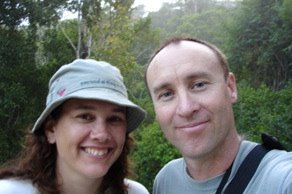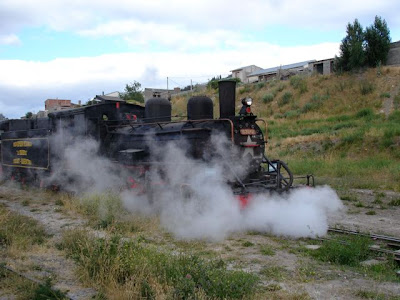This is a non photo blog because last time I couldn’t get my photos to load and I didn’t have a blog written that didn’t need photos… so, time to write one!
One of the great things about camping and traveling by car for two weeks was we lived much more like the regular traveling Argentines, versus backpacker tourists. We visited grocery stores, gas stations, and campgrounds. We got to see how the locals act in all of these different places, and learn the subtle things you can only learn while pondering why there are over 20 different labels and varieties of yerba mate!
The first thing we had to deal with was the simple act of driving in Argentina. I knew that even the U.S. State departments website declares that driving in Argentina is so hazardous, it is the most likely way to injure or kill yourself in the country! Just from walking around we had a good idea of how scary it could be. The reality was that it was not that bad. I just had to approach it as if, as one other book stated, “every other driver was out on the road to kill you.” It worked! You just drive super defensive, which is not to say the same as passive, because sometimes the only answer was to be aggressive.
Needless to say, we survived unscathed, and the car did just fine as well. We really enjoyed our newfound freedom. Remember, even in El Salvador we had to rely on buses… so for us it was more than two years of not having our own car to get around in!
Driving in towns and cities is always the most difficult. Argentina is no exception with some interesting peculiarities. One, though there are some signals (lights), the majority of the intersections are uncontrolled, no stop signs; you just kind of roll up to one and if you think you can make it without hitting anyone, on you go! Over time I realized that this was the reason for all of the one-way streets. It limits where you have to look, plus reduces the number of intersections with the potential for left hand turns. Once you are used to it, it all makes sense because you don’t waste so much time (or energy) stopping and starting at every intersection… I started to like it!
It was only the two-way streets that needed the complication of signals. These had an interesting wrinkle as well. Whereas in the States we have a yellow light to let you know that the light is going to turn red, here they also have a yellow light to let you know that it will be turning green. This leads to a bunch of anticipation and engine revving! I’m not sure that this helps the countries statistics of auto accidents. Still it is an interesting cultural insight that Argentines have decided that this is something they need in their traffic system.
Beyond the driving, the next big change in our travels was going to the grocery store to buy everything we were going to eat for the next week. We had been in to buy water and yogurts, but not the full repertoire that the stores offer. Probably the most daunting was the meat section. Argentines love their beef, but they also have their own system of cuts, including a ton of things we don’t offer at all. So, looking over the offerings and trying to decide what we could cook on a gas stove was difficult. What was a “Tapa de Asado”, a “Paleta”, or “Bola de Lomo”? We knew something about beef from eating at the steakhouses… but it seemed like the markets offered something completely different.
It was fun to try out some of the different cuts, but there is no doubt that we sometimes ate something tough and stringy, that probably should be stew meat. It was even more daunting when the pre-wrapped offerings were slim and I had to actually go over to the butchers. This is the way most Argentines would buy their meat, ordering the specific cut, and watching as they cut it. For me it was more difficult, I would have to ask for suggestions and describe our cooking situation, and then hope that the butcher wanted to be helpful and wasn’t too pressed for time. We did have lots of good beef along the way, but then, as I have said before, it is hard to get bad beef here!
Another interesting grocery section was the Dulce de Leche row. Yes, a whole row for what amounts to caramel! We had become addicted to the stuff thanks to the service-included breakfasts at the hostels. Now we had to choose between multiple companies, and styles like ‘clasico’, ‘reposteria’, ‘casero’, and ‘traditional’. Again, hard to actually make a mistake, but it was disorienting just buying blindly. Still, we managed to travel for enough time to discover our favorite brand and style, and will probably be bringing a case of the stuff back with us on return!
The final thing, bought frequently right at check-out were the Alfajors! These are also a national addition. The simplest description would be two softer cookies with a layer of (no surprise here) dulce de leche between them, and the whole thing dipped or coated in chocolate, sugar-glaze, or coconut… quite decadent! They run about 75 cents each and make a great snack on a bus, or a good way to top off a nice meal. Once again it became our mission to try them all and decide what we liked best. On top of the large companies offerings, there is a thriving ‘artesanial’ or hand-crafted market, with every little regional store having their own variations.
These are probably the things I will take away from this trip as quintessential Argentina. Not the natural wonders, animals, or landscapes…rather the quirky cultural priorities, habits and pastimes that consistently remind me that we are not in the U.S. or El Salvador anymore!










































